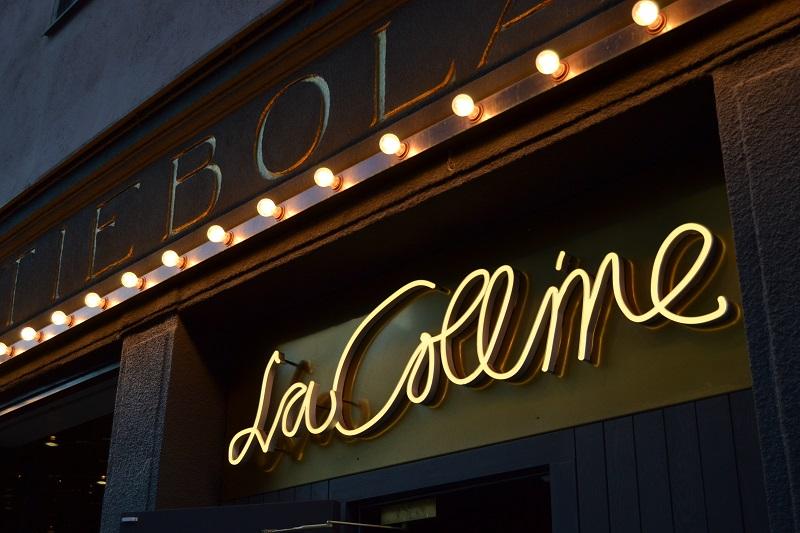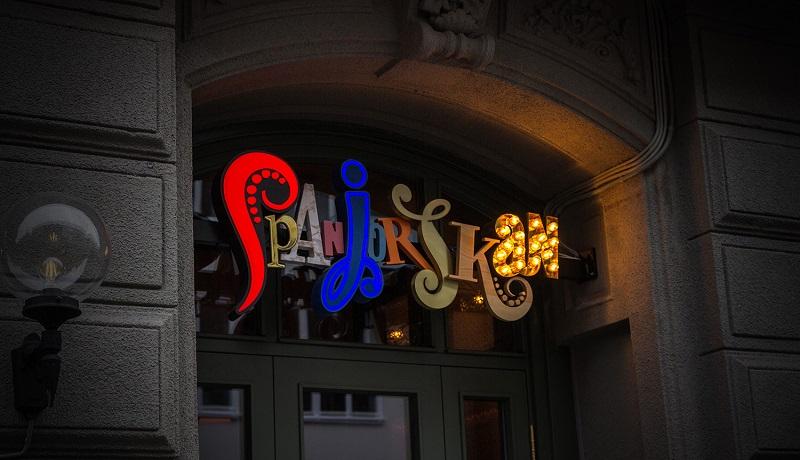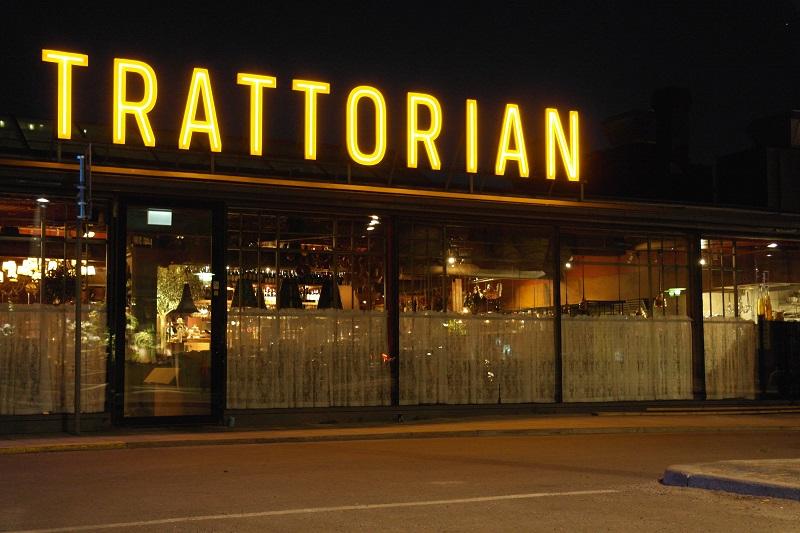Unless you’re running a speakeasy, signage is key for restaurant and bar visibility. A sign not only helps customers find you, it serves as a round-the-clock opportunity to market your business and build brand recognition.
Though we see and refer to signage on a daily basis (and some are even considered iconic — just think of Hollywood or Las Vegas), most of us give little thought to signs beyond the convenience of recognition. It’s exactly this prominence, however, that should serve as your most compelling reason for investing in quality when it comes to restaurant signage.
Your sign represents your restaurant in more ways than one, so let’s take a look at what makes a great sign and why it matters for your food and beverage business.
Signs Create Perception
We’ve all seen sad-looking exterior signs with uneven illumination, mismatched LEDs, and flickering letters. You don’t have to be an industry expert to notice when a sign is cracked, stained, or looks like a temporary fix. While it’s easy to dismiss these observations as pending maintenance issues, there’s something to be said for the old adage about having just one chance to make a strong first impression.
“A great sign reflects your logo, your brand values, and what you stand for,” says Carl Granöö, Head of Sales at FocusNeo, a global signage and visual communications company based in Stockholm, Sweden.
Read more: The Power of StorySelling in Hospitality
Granöö thus encourages restaurateurs to consider how they want their business to be perceived by potential customers. A discount store, for example, has little need for its signage to indicate a premium experience, but a polished bistro or an upscale cocktail bar will benefit from a sign that reflects the quality a customer can expect within.
This isn’t to suggest that you should cut corners with your signage investment if you’re running a casual, wallet-friendly eatery. Dollar for dollar, your sign’s ability to accurately reflect your brand will best convey through quality craftsmanship and thoughtful design.

Sign Design is Key
From a technical standpoint, converting your on-paper logo to a three-dimensional, potentially illuminated object is the trickiest part of bringing a sign to life. Important elements to factor into this process include the surface on which the sign will be mounted (i.e., brick, glass, concrete, drywall), the size of the sign in relation to the available space (bigger isn’t always better!), desired visibility, and — perhaps most importantly — font styles and colors.
“If you have a dark blue logo and you want it to illuminate only from the front, know that from a distance you won’t see it, it’ll just appear blurry,” says Granöö.
This is because blue light is the most troublesome for the human eye; we struggle to bring the wavelengths into focus. Visual clarity is further complicated by intricate fonts, which can make it difficult to distinguish individual letters and symbols. Serif-heavy fonts can also create challenges for effective illumination because LEDs can only be placed so far into the narrowing stroke of a serif point. A reputable sign company will help you identify possible production challenges, but if your bar is located on a busy downtown street and your sign is one of dozens lighting up after sundown, it may be worth rethinking your vision of a face-lit, blue letterset in a swoopy italic font.
Finally, there’s also the possible matter of local ordinances, which may prohibit certain types of signage or otherwise require approval of your proposed design prior to installation. This is especially common with historic or multi-use buildings, and in shopping districts that maintain strict guidelines for a cohesive aesthetic.

Turn on a Sign, Turn up Your Business
Barring any regulations against illuminated signage at the site of your venue, it’s almost certainly worth the cost to put your logo in lights.
“I would always choose to illuminate,” Granöö confirms. “For most companies, there’s a lot of competition and an illuminated sign will be visible all day and night. Illumination is always more competitive.”
This is especially relevant if your venue relies on spontaneous guests; those passersby who see your sign as a sign of encouragement to step inside.
“So much dining is unplanned. You’re out shopping and you’re probably going to eat but you haven’t planned which restaurant, so you just choose something later when you’re hungry. What you see is often where you’ll go,” says Granöö, emphasizing the need for visibility. The exception to this logic, he notes, is if you have a restaurant or bar that stays fully booked months in advance. In that case, “You may not even need a sign, you may want to be a little mysterious.”
Read more: How to Curate Engaging Social Media Content
As far as specific types of signs, it’s hard to go wrong with high-quality illuminated letters. Lettersets — the storefront signs we’re all familiar with above the doors of retail businesses — will light up either from the front, the side, or the back; and sometimes in combination. How your sign illuminates will depend on the aforementioned design and construction factors in relation to your logo and facade. Blade signs, which protrude similar to a flag and have double-sided visibility, are also popular for restaurant and bar use.
Because there are so many variables, it’s difficult to estimate the cost of a sign without reviewing the specifics, but it is fair to anticipate a mid-four-digit invoice for a quality illuminated sign and its installation. If you’re on a budget and feeling tempted to call your local print shop or low-cost signage franchise just to get something on the wall so you can stop thinking about signs...

Remember: This is the Era of Instagram
For better or worse, social media has transformed marketing in the food and beverage industry. Customers can help build your brand simply by snapping a photo of their dessert and tagging your restaurant. So, why not use their urge to document and share to your advantage? Increasingly, operators are designing spaces with Instagram in mind. Colorful walls, great lighting, and tabletops that contrast with servingware are just a few mindful elements that make social media enthusiasts more likely to pull out their phones — and your sign can do the same.
“Focus on having one great sign instead of many signs,” advises Granöö. “This will make a lot more impact than having an unlit sign that won’t be seen at night or doesn’t really reflect your brand.”
Nice signs make for great photo opportunities, and if yours is well-designed and vibrantly lit, it’ll be an irresistible form of passive marketing for your restaurant.
If you’re keen to upgrade your sign but you’re not sure where to start, Granöö suggests taking a walk and looking at signage as you’re out and about. Take note of different types of signs and the varying levels of quality, and if you see something you like, try to find out where the sign came from.
“You should look for a company that really knows the techniques for converting a logo into a sign; there are a lot of aspects that come into play. Buyers usually know little about signs, so being able to explain and present good ideas is important,” he says.
“Quality always pays off.”
Follow us on Facebook and Instagram to stay up-to-date on the latest industry news.
